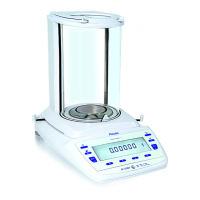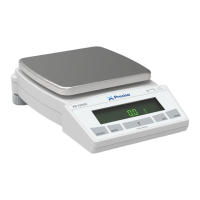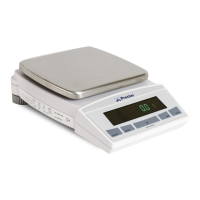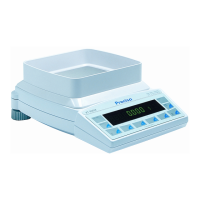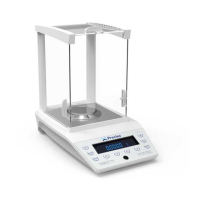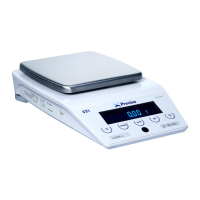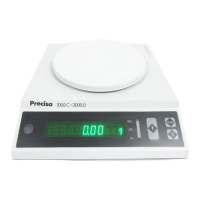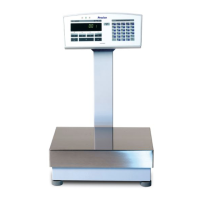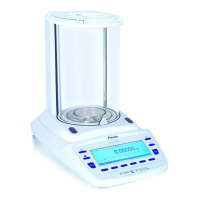Do you have a question about the Precisa BJ Series and is the answer not in the manual?
Details the scope of the operating instructions for the BJ-Series balance.
States the copyright holder and terms of use for the operating instructions.
Explains warning symbols and their meanings.
Provides crucial guidelines for safe balance operation.
Details the balance's features and physical components.
Covers correct usage and conformity standards.
Lists technical specifications like voltage, power, and ambient conditions.
Identifies the labels present on the balance and their locations.
Instructions for carefully unpacking the precision instrument.
Check list for components included in the balance package.
Steps for assembling the balance and selecting an optimal operating location.
Procedures for checking mains voltage and ensuring the balance is level.
Explains balance calibration and dual/floating range features.
Covers switching on, auto-standby, and configuration saving.
Explains menu structure and how to activate configuration/application menus.
Details the control panel layout and its five keys.
Describes the function of each key during weighing operations.
Explains the balance display and its symbols.
Covers password protection for menus.
Explains how to activate and use anti-theft encoding.
Outlines the configuration menu and its definable functions.
Setting the display language and selecting weight units.
Configuring print functions and calibration methods.
Adjusting weighing modes and interface parameters.
Setting date, time, and activating password protection.
Configuring anti-theft codes, backlight, and acoustic feedback.
Explains how applications are called up and adapted to user needs.
How to select and switch between different weighing applications.
Setting up the "Units" application for different weight units.
Setting up "Count" and "Percent" applications.
Using "Net-Total" and "Summation" for cumulative weighings.
Using applications for weighing animals and statistical analysis.
How to perform taring and initiate calibration with the tare key.
Using the print key to output data, status, or application setup.
How to connect devices and configure interface settings like baud rate and parity.
Describes the ASCII code format for data transmission.
Lists commands for controlling the balance remotely.
Provides practical examples of using remote control commands.
Lists error codes and their possible causes.
Provides solutions for common operational faults and display issues.
Step-by-step guides for changing print functions and activating password protection.
Demonstrates setting up the counting application.
Instructions for regular cleaning and maintenance of the balance.
Best practices for safely transporting and storing the balance.
Lists optional accessories and their article numbers.
Provides contact details for customer support and service.
Explains settings for floating display and stability control.
Details the auto-standby and auto-zero correction functions.
Notes and overview of balance calibration methods.
Explains external calibration using ICM and free weights.
Steps to load factory/user configurations or store current settings.
Declares conformity with EU directives and standards.
